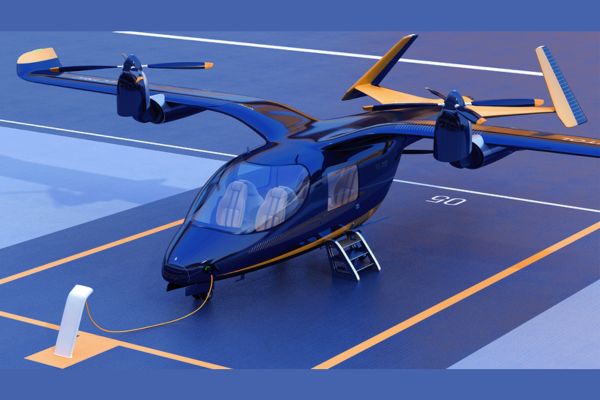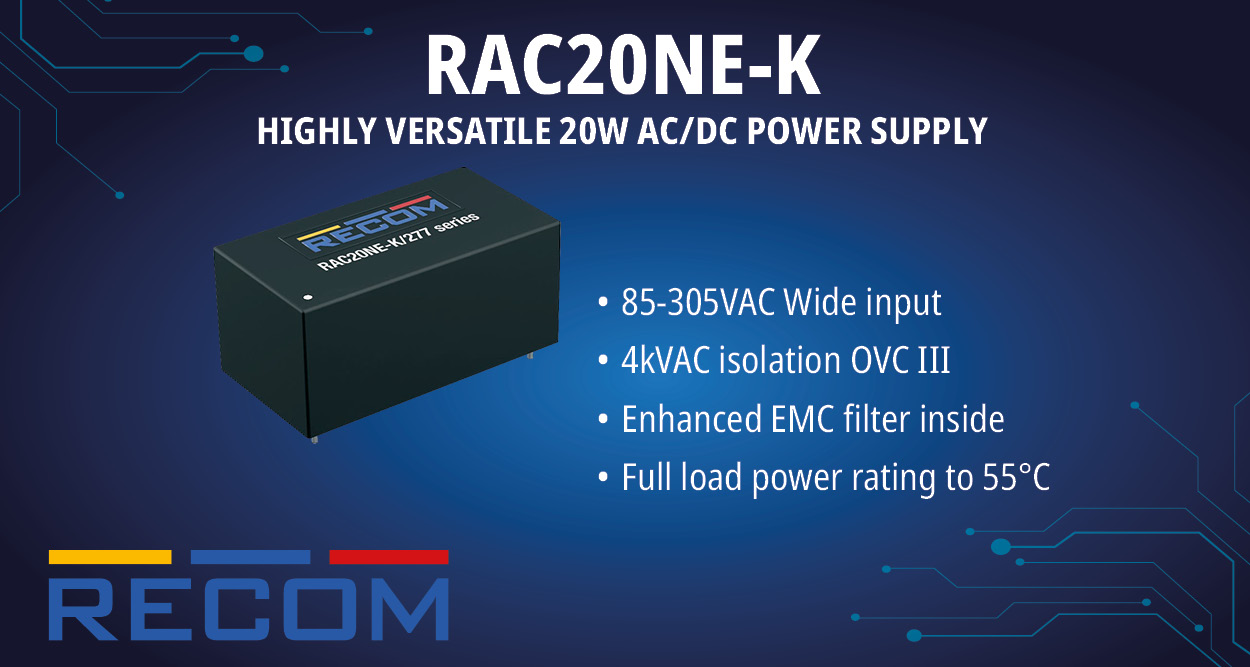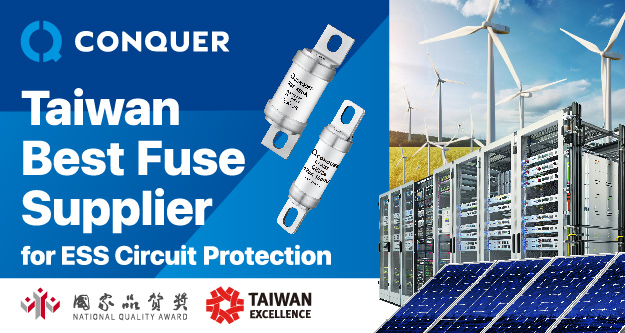The global eVTOL aircraft market size reached USD 2.14 billion in 2024 and is projected to hit around USD 170 billion by 2034 with a remarkable CAGR of 54.90% between 2024 and 2034
eVTOL (Electric Vertical Takeoff and Landing) aircraft are innovative vehicles designed to take off, hover, and land vertically using electric propulsion systems. They are seen as a key part of the future of urban air mobility (UAM), offering a sustainable and efficient way to navigate crowded urban environments. These aircraft promise quieter and cleaner air travel compared to traditional helicopters, making them suitable for short-distance passenger transport, cargo delivery, and emergency medical services. Companies like Joby Aviation, Lilium, and EHang are at the forefront of developing these technologies. While promising, eVTOLs still face challenges related to battery capacity, air traffic management, and public acceptance, but they are expected to play a significant role in urban commuting in the near future.
eVTOL Aircraft Market Key Points
- By lift technology, the vectored thrust segment holds the biggest market share and will likely maintain growth from 2025 to 2034.
- By mode of operation, the piloted segment generated more than 31% market share in 2024 and the semi-autonomous segment dominates the market and captured more than 38% market share.
- By propulsion type, the battery-electric segment is showing significant growth.
- By range, the 200-500 km segment will likely dominate the market from 2025-2034.
- By application, the commercial segment is considered the quickest-growing segment.
By maximum take-off weight (MTOW), The <250 kg segment will likely grow at a good CAGR.
- North America dominated the global market with the largest market share of 36% in 2024.
AI impact in eVTOL Aircraft Market
The eVTOL (electric Vertical Take-Off and Landing) aircraft market is rapidly evolving, driven by advancements in electric propulsion, automation, and artificial intelligence (AI). AI plays a crucial role in making eVTOLs more efficient, autonomous, and safer. One of the most significant impacts of AI is in autonomous flight and navigation, where intelligent algorithms enable these aircraft to perform autonomous take-offs, landings, and route optimization, significantly reducing human intervention. AI-powered sensors and computer vision systems also enhance safety by detecting obstacles and adjusting flight paths in real time. Moreover, AI is instrumental in predictive maintenance by monitoring the health of critical components like motors and batteries, detecting potential failures before they occur, and optimizing energy usage to extend battery life.
eVTOL Aircraft Market Trends
Increasing Adoption of Urban Air Mobility (UAM):
- Over 200 companies are actively developing eVTOL aircraft for urban air mobility solutions.
- Major cities like Los Angeles, Dubai, and Singapore are piloting UAM initiatives.
- Nearly 70% of global urban populations are expected to benefit from UAM by 2030.
Rise of Battery and Powertrain Innovations:
- Battery energy density has improved by 10-20% per year, enabling longer flight ranges.
- Companies like Lilium and Joby Aviation are investing in high-capacity lithium-ion batteries.
- Hybrid eVTOL models are gaining popularity for increased range, with an estimated 30% adoption rate in new prototypes.
Increasing Collaborations and Partnerships:
- Airbus and Uber announced a partnership for air taxi development, aiming for commercial rollout by 2026.
- Over 50% of eVTOL projects involve collaborations between aviation and automotive companies.
- Governments are also partnering with startups for pilot projects, such as the UK’s Future Flight Challenge, which funds up to £125 million.
Advances in Autonomous eVTOL Technology:
- Over 60% of prototypes now incorporate semi-autonomous or fully autonomous flight technology.
- Companies like EHang and Volocopter are leading in autonomous passenger transport, with successful test flights in 2024.
- Integration of AI-based navigation is becoming a standard feature for improving safety and efficiency.
Regulatory Developments and Certifications:
- The FAA and EASA are actively developing certification frameworks for eVTOL aircraft.
- By 2024, the FAA issued special conditions for the airworthiness of eVTOLs, covering safety, noise, and performance.
- 20+ countries are aligning their aviation standards to accommodate eVTOL operations.
Scope of eVTOL Aircraft Market
| Report Attribute | Key Statistics |
| Market Size in 2024 | USD 2.14 Billion |
| Market Size by 2034 | USD 170 Billion |
| Growth Rate from 2025 to 2034 | CAGR of 54.90% |
| Base Year | 2024 |
| Forecast Period | 2025 to 2034 |
| Largest Market | North America |
| Fastest Growing Market | Europe |
| Segments Covered | By Lift Technology, By Mode of Operation, By Propulsion Type, By Range, By Application, and By Maximum Take-Off Weight (MTOW) |
| Regions Covered | North America, Europe, Asia-Pacific, Latin America and Middle East & Africa |
Recent Activities on eVTOL Aircraft Market
- In January 2025, Pipistrel’s Nuuva V300, an unmanned hybrid-electric VTOL cargo aircraft, achieved its first hover flight in Gorizia, Italy. This aircraft features a tandem wing design with eight electric engines for vertical propulsion and an internal combustion engine for thrust.
- Archer Aviation, backed by Stellantis and United Airlines, has been conducting test flights of its “Midnight” eVTOL over farmland in Salinas, California. This aircraft is designed for urban air mobility, aiming to transform city transportation.
- The U.S. Federal Aviation Administration (FAA) has created a new aircraft category called “powered lift,” facilitating the integration of eVTOLs into the national airspace. This regulatory advancement is a significant step toward the commercial operation of air taxis in the United States.
eVTOL Aircraft Market Top Companies
- Airbus SE
- Bell Textron, Inc.
- EHang Holdings Ltd.
- Elbit Systems) Ltd.
- Embraer SA
- Kitty Hawk
- Joby Aviation
- Beta Technologies
eVTOL Aircraft Market Segmentation
Lift Technology Outlook
Lift Plus Cruise technology utilizes separate propulsion systems for vertical lift and cruise flight. This design allows stable hover capability combined with efficient forward motion, making it ideal for medium-range urban air mobility. The separation of propulsion systems ensures better control during takeoff and landing, while still maintaining aerodynamic efficiency during horizontal flight.
Multirotor eVTOLs use multiple rotors (typically four or more) to generate vertical lift. They are highly maneuverable, allowing for precise control and stability. Due to their compact design, they are perfect for short-distance travel within urban environments, such as passenger transport, cargo delivery, and emergency response. However, their range and speed are relatively limited compared to other lift technologies.
Vectored Thrust technology employs the same propulsion system for both lift and forward thrust, significantly enhancing aerodynamic efficiency. This configuration is suitable for long-distance travel and is often seen in more advanced, high-speed eVTOL designs. The ability to tilt the rotors or thrusters allows for smoother transitions between vertical and horizontal flight.
Mode of Operation Outlook
Semi-autonomous eVTOLs operate with a combination of human control and automated systems. The pilot oversees critical decisions, but most routine operations are managed by the onboard system. This mode strikes a balance between human input and automation, making it suitable for early adoption phases where safety assurance is paramount.
Autonomous eVTOLs are fully automated, using advanced AI and machine learning for navigation, obstacle avoidance, and decision-making. These aircraft do not require human intervention, making them highly efficient for urban transport. Autonomous systems reduce human error and can operate more consistently, but they require robust regulatory frameworks and advanced safety protocols.
Piloted eVTOLs are manually operated by a human pilot. This traditional mode is crucial in scenarios requiring human judgment, such as emergency medical services (EMS) and military applications. Piloted eVTOLs are currently more acceptable to regulators due to established safety standards and pilot training practices.
Propulsion Type Outlook
Hybrid-Electric propulsion combines traditional combustion engines with electric motors, offering an extended range and increased reliability. This configuration is preferred for intercity transportation, where both efficiency and range are necessary. Hybrid systems mitigate the risk of battery depletion during longer flights, making them versatile for various applications.
Hydrogen-Electric propulsion uses hydrogen fuel cells to generate electrical power, promising zero emissions and long flight endurance. While offering significant environmental benefits, hydrogen-based systems face challenges related to fuel storage and infrastructure. Nonetheless, they are being actively developed as part of the future of sustainable aviation.
Battery-Electric eVTOLs are powered solely by rechargeable batteries, making them a popular choice for urban air mobility. They offer zero emissions, lower noise levels, and are cost-effective for short-range operations. However, their flight duration is limited by battery capacity, necessitating frequent recharging or battery swapping.
Range Outlook
Short-range eVTOLs are primarily designed for intra-city travel, including urban commuting, last-mile delivery, and medical evacuation. These aircraft are lightweight and optimized for frequent, short-distance flights, minimizing operational costs while offering swift mobility within metropolitan areas.
Mid-to-long-range eVTOLs are suitable for intercity transportation, regional connectivity, and extended urban air mobility networks. These aircraft balance speed, range, and passenger capacity, enabling efficient travel between cities or across larger metropolitan regions.
Application Outlook
eVTOLs in EMS play a vital role in delivering rapid response for medical emergencies. Equipped with medical supplies and capable of transporting patients to hospitals swiftly, they significantly reduce response times in urban and remote areas. Their vertical takeoff capability allows them to land in constrained spaces, such as rooftops or parking lots.
Commercial applications include passenger transport (air taxis), cargo delivery, and aerial sightseeing. eVTOLs are seen as a solution to urban traffic congestion, offering quick and efficient transit for individuals and goods. Leading companies are actively developing UAM networks to integrate these aircraft into public transport systems.
In the military sector, eVTOLs are utilized for troop deployment, surveillance, reconnaissance, and logistics support. Their ability to take off and land vertically makes them invaluable in areas with limited infrastructure. Additionally, autonomous military eVTOLs are being explored for reconnaissance and combat support missions.
Maximum Take-Off Weight (MTOW) Outlook
These lightweight eVTOLs are typically single-passenger drones or small cargo aircraft. Their compact size and agility make them suitable for short-range tasks, including quick deliveries and personal commuting.
Medium-weight eVTOLs are designed for small passenger groups or light cargo. They offer a balance between payload and range, commonly used in urban mobility services.
This category is ideal for air taxis and commercial passenger applications. It accommodates moderate payloads while maintaining efficiency in both urban and intercity travel scenarios.
Larger eVTOLs in this category are used for multi-passenger transport or substantial cargo loads. They are designed for longer distances, offering increased range and payload capacity.
Heavy-duty eVTOLs cater to military and large-scale commercial applications. They are capable of carrying multiple passengers, heavy equipment, or military supplies over long distances. Their robust design and powerful propulsion systems ensure durability and stability.The global eVTOL aircraft market size reached USD 2.14 billion in 2024 and is projected to hit around USD 170 billion by 2034 with a remarkable CAGR of 54.90% between 2024 and 2034
eVTOL (Electric Vertical Takeoff and Landing) aircraft are innovative vehicles designed to take off, hover, and land vertically using electric propulsion systems. They are seen as a key part of the future of urban air mobility (UAM), offering a sustainable and efficient way to navigate crowded urban environments. These aircraft promise quieter and cleaner air travel compared to traditional helicopters, making them suitable for short-distance passenger transport, cargo delivery, and emergency medical services. Companies like Joby Aviation, Lilium, and EHang are at the forefront of developing these technologies. While promising, eVTOLs still face challenges related to battery capacity, air traffic management, and public acceptance, but they are expected to play a significant role in urban commuting in the near future.
eVTOL Aircraft Market Key Points
- By lift technology, the vectored thrust segment holds the biggest market share and will likely maintain growth from 2025 to 2034.
- By mode of operation, the piloted segment generated more than 31% market share in 2024 and the semi-autonomous segment dominates the market and captured more than 38% market share.
- By propulsion type, the battery-electric segment is showing significant growth.
- By range, the 200-500 km segment will likely dominate the market from 2025-2034.
- By application, the commercial segment is considered the quickest-growing segment.
By maximum take-off weight (MTOW), The <250 kg segment will likely grow at a good CAGR.
- North America dominated the global market with the largest market share of 36% in 2024.
AI impact in eVTOL Aircraft Market
The eVTOL (electric Vertical Take-Off and Landing) aircraft market is rapidly evolving, driven by advancements in electric propulsion, automation, and artificial intelligence (AI). AI plays a crucial role in making eVTOLs more efficient, autonomous, and safer. One of the most significant impacts of AI is in autonomous flight and navigation, where intelligent algorithms enable these aircraft to perform autonomous take-offs, landings, and route optimization, significantly reducing human intervention. AI-powered sensors and computer vision systems also enhance safety by detecting obstacles and adjusting flight paths in real time. Moreover, AI is instrumental in predictive maintenance by monitoring the health of critical components like motors and batteries, detecting potential failures before they occur, and optimizing energy usage to extend battery life.
eVTOL Aircraft Market Trends
Increasing Adoption of Urban Air Mobility (UAM):
- Over 200 companies are actively developing eVTOL aircraft for urban air mobility solutions.
- Major cities like Los Angeles, Dubai, and Singapore are piloting UAM initiatives.
- Nearly 70% of global urban populations are expected to benefit from UAM by 2030.
Rise of Battery and Powertrain Innovations:
- Battery energy density has improved by 10-20% per year, enabling longer flight ranges.
- Companies like Lilium and Joby Aviation are investing in high-capacity lithium-ion batteries.
- Hybrid eVTOL models are gaining popularity for increased range, with an estimated 30% adoption rate in new prototypes.
Increasing Collaborations and Partnerships:
- Airbus and Uber announced a partnership for air taxi development, aiming for commercial rollout by 2026.
- Over 50% of eVTOL projects involve collaborations between aviation and automotive companies.
- Governments are also partnering with startups for pilot projects, such as the UK’s Future Flight Challenge, which funds up to £125 million.
Advances in Autonomous eVTOL Technology:
- Over 60% of prototypes now incorporate semi-autonomous or fully autonomous flight technology.
- Companies like EHang and Volocopter are leading in autonomous passenger transport, with successful test flights in 2024.
- Integration of AI-based navigation is becoming a standard feature for improving safety and efficiency.
Regulatory Developments and Certifications:
- The FAA and EASA are actively developing certification frameworks for eVTOL aircraft.
- By 2024, the FAA issued special conditions for the airworthiness of eVTOLs, covering safety, noise, and performance.
- 20+ countries are aligning their aviation standards to accommodate eVTOL operations.
Scope of eVTOL Aircraft Market
| Report Attribute | Key Statistics |
| Market Size in 2024 | USD 2.14 Billion |
| Market Size by 2034 | USD 170 Billion |
| Growth Rate from 2025 to 2034 | CAGR of 54.90% |
| Base Year | 2024 |
| Forecast Period | 2025 to 2034 |
| Largest Market | North America |
| Fastest Growing Market | Europe |
| Segments Covered | By Lift Technology, By Mode of Operation, By Propulsion Type, By Range, By Application, and By Maximum Take-Off Weight (MTOW) |
| Regions Covered | North America, Europe, Asia-Pacific, Latin America and Middle East & Africa |
Recent Activities on eVTOL Aircraft Market
- In January 2025, Pipistrel’s Nuuva V300, an unmanned hybrid-electric VTOL cargo aircraft, achieved its first hover flight in Gorizia, Italy. This aircraft features a tandem wing design with eight electric engines for vertical propulsion and an internal combustion engine for thrust.
- Archer Aviation, backed by Stellantis and United Airlines, has been conducting test flights of its “Midnight” eVTOL over farmland in Salinas, California. This aircraft is designed for urban air mobility, aiming to transform city transportation.
- The U.S. Federal Aviation Administration (FAA) has created a new aircraft category called “powered lift,” facilitating the integration of eVTOLs into the national airspace. This regulatory advancement is a significant step toward the commercial operation of air taxis in the United States.
eVTOL Aircraft Market Top Companies
- Airbus SE
- Bell Textron, Inc.
- EHang Holdings Ltd.
- Elbit Systems) Ltd.
- Embraer SA
- Kitty Hawk
- Joby Aviation
- Beta Technologies
eVTOL Aircraft Market Segmentation
Lift Technology Outlook
Lift Plus Cruise technology utilizes separate propulsion systems for vertical lift and cruise flight. This design allows stable hover capability combined with efficient forward motion, making it ideal for medium-range urban air mobility. The separation of propulsion systems ensures better control during takeoff and landing, while still maintaining aerodynamic efficiency during horizontal flight.
Multirotor eVTOLs use multiple rotors (typically four or more) to generate vertical lift. They are highly maneuverable, allowing for precise control and stability. Due to their compact design, they are perfect for short-distance travel within urban environments, such as passenger transport, cargo delivery, and emergency response. However, their range and speed are relatively limited compared to other lift technologies.
Vectored Thrust technology employs the same propulsion system for both lift and forward thrust, significantly enhancing aerodynamic efficiency. This configuration is suitable for long-distance travel and is often seen in more advanced, high-speed eVTOL designs. The ability to tilt the rotors or thrusters allows for smoother transitions between vertical and horizontal flight.
Mode of Operation Outlook
Semi-autonomous eVTOLs operate with a combination of human control and automated systems. The pilot oversees critical decisions, but most routine operations are managed by the onboard system. This mode strikes a balance between human input and automation, making it suitable for early adoption phases where safety assurance is paramount.
Autonomous eVTOLs are fully automated, using advanced AI and machine learning for navigation, obstacle avoidance, and decision-making. These aircraft do not require human intervention, making them highly efficient for urban transport. Autonomous systems reduce human error and can operate more consistently, but they require robust regulatory frameworks and advanced safety protocols.
Piloted eVTOLs are manually operated by a human pilot. This traditional mode is crucial in scenarios requiring human judgment, such as emergency medical services (EMS) and military applications. Piloted eVTOLs are currently more acceptable to regulators due to established safety standards and pilot training practices.
Propulsion Type Outlook
Hybrid-Electric propulsion combines traditional combustion engines with electric motors, offering an extended range and increased reliability. This configuration is preferred for intercity transportation, where both efficiency and range are necessary. Hybrid systems mitigate the risk of battery depletion during longer flights, making them versatile for various applications.
Hydrogen-Electric propulsion uses hydrogen fuel cells to generate electrical power, promising zero emissions and long flight endurance. While offering significant environmental benefits, hydrogen-based systems face challenges related to fuel storage and infrastructure. Nonetheless, they are being actively developed as part of the future of sustainable aviation.
Battery-Electric eVTOLs are powered solely by rechargeable batteries, making them a popular choice for urban air mobility. They offer zero emissions, lower noise levels, and are cost-effective for short-range operations. However, their flight duration is limited by battery capacity, necessitating frequent recharging or battery swapping.
Range Outlook
Short-range eVTOLs are primarily designed for intra-city travel, including urban commuting, last-mile delivery, and medical evacuation. These aircraft are lightweight and optimized for frequent, short-distance flights, minimizing operational costs while offering swift mobility within metropolitan areas.
Mid-to-long-range eVTOLs are suitable for intercity transportation, regional connectivity, and extended urban air mobility networks. These aircraft balance speed, range, and passenger capacity, enabling efficient travel between cities or across larger metropolitan regions.
Application Outlook
eVTOLs in EMS play a vital role in delivering rapid response for medical emergencies. Equipped with medical supplies and capable of transporting patients to hospitals swiftly, they significantly reduce response times in urban and remote areas. Their vertical takeoff capability allows them to land in constrained spaces, such as rooftops or parking lots.
Commercial applications include passenger transport (air taxis), cargo delivery, and aerial sightseeing. eVTOLs are seen as a solution to urban traffic congestion, offering quick and efficient transit for individuals and goods. Leading companies are actively developing UAM networks to integrate these aircraft into public transport systems.
In the military sector, eVTOLs are utilized for troop deployment, surveillance, reconnaissance, and logistics support. Their ability to take off and land vertically makes them invaluable in areas with limited infrastructure. Additionally, autonomous military eVTOLs are being explored for reconnaissance and combat support missions.
Maximum Take-Off Weight (MTOW) Outlook
These lightweight eVTOLs are typically single-passenger drones or small cargo aircraft. Their compact size and agility make them suitable for short-range tasks, including quick deliveries and personal commuting.
Medium-weight eVTOLs are designed for small passenger groups or light cargo. They offer a balance between payload and range, commonly used in urban mobility services.
This category is ideal for air taxis and commercial passenger applications. It accommodates moderate payloads while maintaining efficiency in both urban and intercity travel scenarios.
Larger eVTOLs in this category are used for multi-passenger transport or substantial cargo loads. They are designed for longer distances, offering increased range and payload capacity.
Heavy-duty eVTOLs cater to military and large-scale commercial applications. They are capable of carrying multiple passengers, heavy equipment, or military supplies over long distances. Their robust design and powerful propulsion systems ensure durability and stability.

















